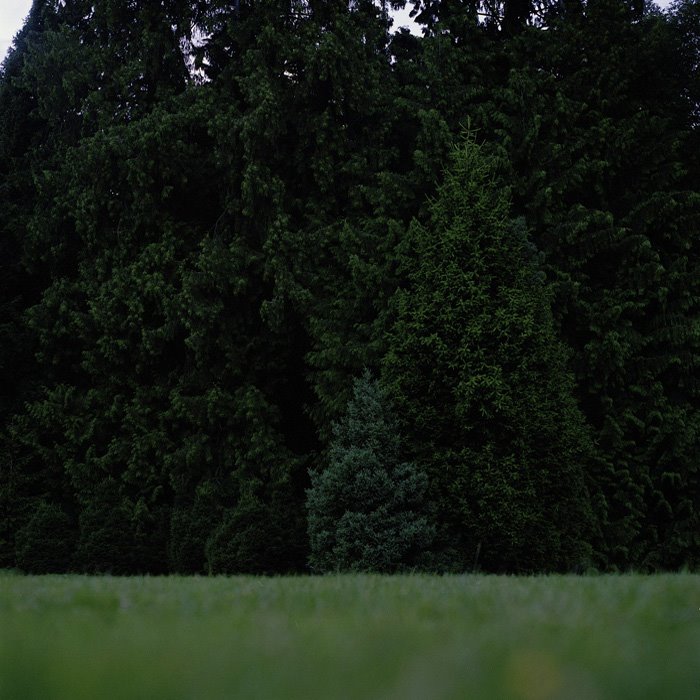I went to Jen Bekman Gallery last Friday evening for the opening of HEY, HOT SHOT! The gallery is located in 6 Spring Street, before that, I’ve never been to the Bowery Art District. I got the gallery at 7:00pm, and was shocked by the extremely crowded scene. When I finally squashed in the gallery, I found it is impossible to see the works, people are everywhere. Seems none of them really came to see the work. Then, why do such a great number of people congested here at a chilly snowing night? What do they do and what are they expecting form this opening event? Maybe it is true, the meaning of opening is only for the purpose of social and exchange information.
Jen Bekman opened this pocket-sized gallery in 2003, with the mission of supporting emerging artists and collectors, and she's made a name for herself doing just that. The gallery space is really tiny, if you stretch two arms, you can nearly reach the wall in both sides, it is impossible to exhibit sculpture or installation in such a space, so it just focus on mediums of photography, works on paper, paintings, and mixed media. But considering the limitation of physical space, they launch an online project called 20x200 to sell prints online with price ranging from $20-$2000. This project not only reduces cost for the gallery, but also attract those art lovers who are not serious collector to purchase prints in a more convenient and comfortable way.
The HEY, HOT SHOT! is a long term project for the discovering and supporting of emerging artists. For a gallery with its mission in supporting emerging artists, this mechanism is quite feasible to allow new work and new voices to be heard, and also provide time for both the gallery and artists to understand each other. Twice a year, the panel select five photographers from all the competitors, award $500 for each person and do a group show for them. At the end of the year, two of them will be chosen to receive continuing representation from the gallery and have solo show in the gallery within two years. Then the gallery will occasionally exhibit the work of emerging artists alongside acclaimed photographers to help the developing career of these artists. I think the time line of choosing and supporting young artist is reasonable, before the gallery decide which artist to represent, it create a yearlong time to examine both the artist and potential collectors.
Another part that I feel good about Jen Bekman is its informative blogs as a forum of critique and discussion. One of its blog constantly post competition opportunities and awards nation wide, recent events and achievements of its former project winners, discussion and interview with panelists, these blogs are mutual benefit, especially for a gallery target younger generation artists. Jen Bekman herself own a blog too, posted with her critical thinking, interview and coverage by major medias as The New York Times and Foam Magazine. Undoubtedly, the anecdotal evidence on the gallerist’s background suggests that a taste for art plays a large role. And Jen is good at promoting herself and create a certain culture for her business.


John Mann
这件作品我比较喜欢,但我现在试着尽量不从自己的喜好出发去看作品,用一个开放的姿态去谦虚阅读每一件作品是与其对话的第一步。Melissa那天说得很有道理,可以在看每一个展挑出自己欣赏、不欣赏和压根看不懂的作品,然后仔细反思为什么喜欢,哪些因素造成自己不喜欢,对看不懂的作品进一步从艺术家自己的声明,他的个人经历和社会语境去理解,找人对话,并在一段时间后回头反思。此时不喜欢或看不懂的,或许彼时在全面理解后便有了欣赏的理由。我对John Mannde 疑问是他的媒介,他这东西为什么选择以摄影为媒介,必要性在哪里?
以下是Bloodypixy的回应:
JOHN MANN的作品说明:Following five years of photographing the landscape and those who travel through it, the series Folded In Place finds its exploration of place though a visualization of the map as the final destination. These images turn the abstract representation of the map back into a physical landscape, by looking at the map as a geography of its own. 我觉得最简单的解释是,他只希望他的地图从他选择的角度被人观看,这样才会是a geography of its own。另外一个有联系的摄影师是THOMAS DEMAND http://www.thomasdemand.de/。他所有的照片都是用纸打起来的模型,但是他从来都不展示模型本身。
摄影这种媒介和装置很大的不同就是它的前提是已将观看的视野和角度锁定,带有一种强制性,同时它使作品和观者在空间上的距离,距离之间的对话受到限制。如John自己所释地图其自身成为一种geography,这让我想起郭熙评山水画言之:“山水有可行者,有可望者,有可居者,有可游者……但可行可望不如可居可游之为得。”如果地图本身成为一种地理,一种终极目的,为什么不能提供一种弹性更大的空间对话呢?



Bloodypixy
第一张照片里隐含的身份政治引起我极大的兴趣,它对男女关系中性别角色的试探很微妙也很到位,颠覆了传统性权利和固定角色。男性的身体阴柔裸露,而女性不论从姿态和衣着色彩上都更显得霸道强势。同时,这个作品在男权和女权之间形成的张力可以被看成是对这个时代各种政治关系的一种叙述,一种在后殖民之后的身份政治阐释。


Hosang Park
对韩国在资本主义影响下和在现代化进程中的社会做了一个有趣的俯瞰。但这些做为公共场所的公园无一不透着一种后工业时代的冷漠慌凉。


我很认真的把你发上来的照片看了下,以及你的文字资料,英文的东西对我来说难了点但庆幸大多还能看明白。还要感谢你的中文翻译。
回复删除自从毕业后,在上海我接触了一群年轻艺术家和一线艺术家,更坚信的认为西方的当代艺术发展包括(日本,韩国)确确实实要比中国发达、完善几十年,即使中国经济发展速度再快,相比人的思想观念还是相对滞后,这也是中国艺术发展的现状,无用多解释,也不可避免。
对于地球另一边的艺术前沿资讯我一直想关注但没有途径,有意思的是认识了你,那我也会积极的发上些中国本土的艺术展览及作品情况与你交流。
从作品开始 John Mann 的作品,我个人认为这种观念性作品的思维方式,目前仅限于在西方出现。最初看到作品图像没看到文字资料的时候,我的第一反应是“他要表达什么”,再深入下去理解是“地图上是不是有些什么符号性或象征意味的东西”于是我开始研究地图里面的内容,继续深思的时候其实我已经进入了一种噩梦般的思考方法论中,这是学院教育带来的弊病,我们总是希望挖掘点什么东西,但作品的成功却是赤裸裸的在你眼前展示着,我被John Mann的小趣味蒙骗了。如果没有看你下面的文字解释我对这件作品其实是无解,或者还有种解释是我没有能全方位的亲眼看到这位艺术家的作品。
Bloodypixy 下面的三张摆拍照片,我个人觉得其实很容易理解,是比较有公共语言的作品,关于性别的话语权问题,显然应该是一位女性艺术家,如果是一名男性艺术家的话,那这位艺术家在性取向问题上是有绝对有问题的或者有其他的客观原因。
一、女性玩弄男性,故意带有点对男性社会地位挑衅姿态的行为图片,第二张隐秘的窥视,第三张可能是关于哲学层面,女人脸背对着拍摄的照相机,怀抱一颗大树旁边还有一根电线杆,与所谓的佛洛伊德的《梦的解析》内容完全吻合,在我理解为是一本哲学书本一小部分内容的图像翻版,作品相对比较直观,如果从另一个美学角度来分析我觉得也只是质量过得去的摆拍作品。写下我的一些感受和你交流一下。
图片拍的不错!